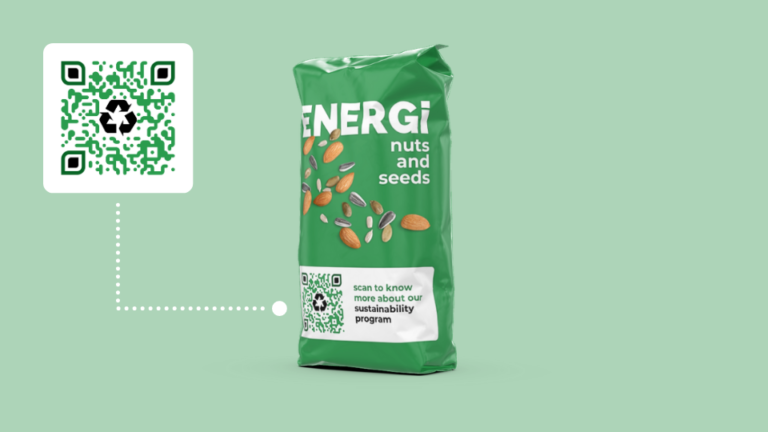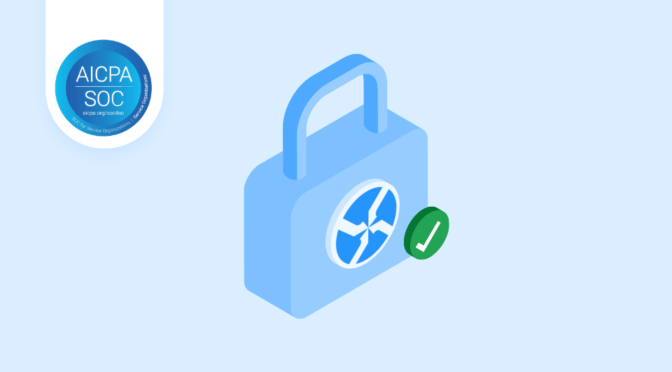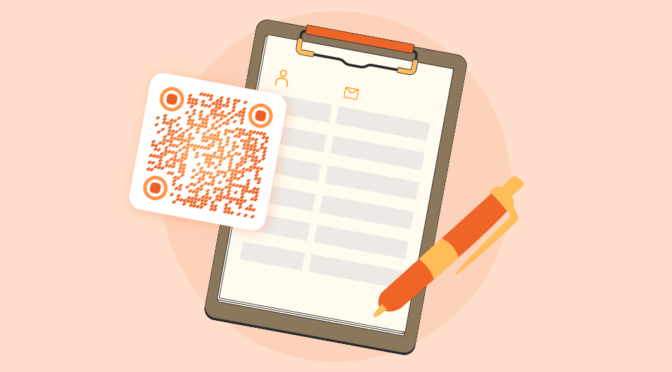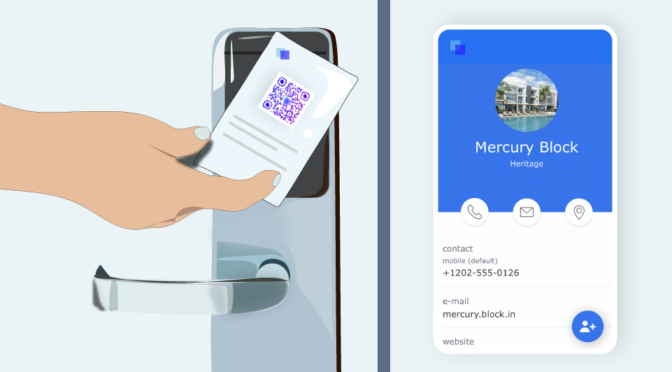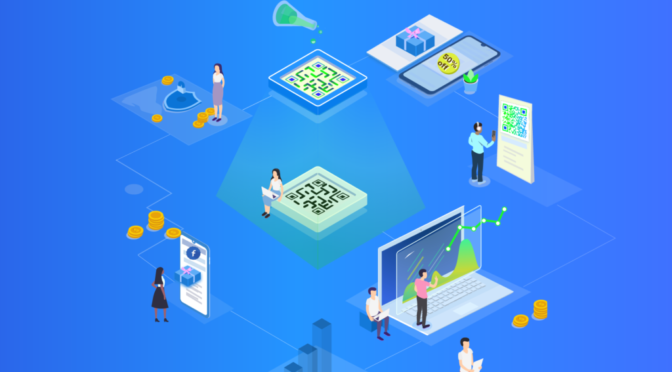Welcome to the first-ever edition of the best QR Codes on product packaging – the first of many!
This month, we’re focusing on sustainability, and we’ll be diving into some of the best QR Code campaigns that shed light on brands’ sustainability and environmentally friendly practices.
Consumers today are more environmentally conscious than ever before. According to NielsenIQ’s study, 48% of consumers in the United States said they would change their consumption habits to reduce their impact on the environment.
The same study also indicates that these sustainability-minded consumers are expected to spend up to $150 billion on sustainable FMCG products in 2021.
It’s not enough to adopt sustainable practices but also market the same to consumers. According to research by NYU Stern’s Center for Sustainable Business, 50% of CPG growth from 2013-2018 resulted from sustainability-marketed products.
Which brings us to the question – how can brands reassure consumers that the products they sell are sustainable?
The answer is QR Codes on product packaging.

QR Codes are a technology gaining significant popularity over the years, the reason being that they’re easy to set up, affordable, and most importantly, mobile-first.
Adding QR Codes to packaging lets CPG brands communicate a wide array of information to consumers while they’re on the go. All it takes is a single scan to access details about a brand’s sustainability efforts.
7 best QR Codes on product packaging for sustainability
#1. Cocokind utilizes QR Codes on packaging to share essential sustainability information

Cocokind, a US-based, organic beauty brand, launched a new secondary product packaging focused more on sustainability.
As part of the brand’s efforts to become more transparent, the new sustainable packaging contains detailed sustainability information called “Sustainability Facts”.
Each product label highlights its impact on the environment across three life cycles – sourcing, consumer, and end-of-life.
It also includes instructions for curbside recycling, how much of the product’s packaging and cap are recyclable, and what materials they’re made from.
A QR Code on the product packaging directs consumers to the brand’s e-commerce website to access more resources on sustainability.
We were calling ourselves ‘clean’ and ‘sustainable’. Those things are valid, but what they mean is obviously not regulated as they get thrown around more and more in the industry. We realized we couldn’t just use these words anymore, and we needed to be able to figure out, how do we measure this internally? And how do we communicate that and make sure that the burden of education is on the brand and not the consumer?
Priscilla Tsai, CEO & Founder, Cocokind
#2. Thrift+ uses QR Codes to eliminate the need for paper labels

Thrift+, an online second-hand clothing platform, teamed up with packaging specialist Duo to create mailing bags for its collaboration with the clothing brand, hush.
The brand aims to offer alternative solutions to reduce clothing waste and gather funds for charitable organizations in need.
Duo developed GreenPE mailing bags that contain a unique QR Code that, once scanned, allows the consumer to set up a return for the mailing bag for reuse.
hush’s consumers can use the mailing bags to send unwanted garments to Thrift+, which photographs the same and creates listings on their website for sale.
Each mailing bag’s QR Code contains details about the bag’s sender, which is processed once it arrives at Thrift+’s facility.
Once an item is sold, a third of the proceeds are donated to a charity, a third covers Thrift+’s cost, and a third is sent to the consumer as Thrift+ credit. The consumer also receives a 10% discount code from hush.
The ability for Duo to print a unique QR Code on each bag has removed the need for us to attach a paper label on each bag. This has streamlined our operations saving us time, money, and materials.
Joe Metcalfe, CEO & Co-founder, Thrift+
In addition to the above, Joe Metcalfe has also mentioned that Thrift+’s and hush’s consumers who are using this service are more environmentally conscious and are actively engaging with the circular economy.
#3. unspun leverages QR Codes to share circular care instructions and verify materials used

unspun, a digital apparel company, launched Genesis, its most sustainable pair of jeans.
These jeans help solve problems such as a large amount of water and energy needed along with the significant amount of pollution caused when manufacturing a regular pair of jeans.
Genesis jeans are manufactured using Resortecs smart stitch threads, which make them convenient for recycling.
The jeans contain a QR Code that, once scanned, provides consumers with circular care instructions and shares important circularity data with resellers and recyclers.
The QR Code embedded into each pair of jeans lets consumers track and trace its life cycle. It also ensures that the product and its materials are easily identifiable and authenticated for resellers and recyclers.
Additionally, the QR Codes act as a channel to interact with consumers and provide them with relevant information regarding product care, resale, and recycling.
The Genesis jeans are a stellar demonstration of combining innovative design, emerging technology, and cutting-edge materials to create a product that massively reduces water usage, waste, and energy consumption. It also plays a major role in the tracking and identification of garments across the circular supply chain.
At unspun, technology is part of our DNA. From the mobile phone scanning technology that enables us to make custom-fitted jeans unique to each customer to the high tech Resortecs smart stitch threads that facilitate the circular capacity of our new Genesis jeans, we intentionally design-in materials and systems that ensure our jeans are better fitting, better looking and simply better because they are sustainable.
Annika Visser, Operations Lead, unspun
#4. Austral Fisheries uses QR Codes on packaging to communicate legal & sustainable fishing practices

Austral Fisheries, one of Australia’s largest commercial fishing companies, commits to responsible fishing.
A large portion of the world’s fish is caught illegally in restricted areas or by unauthorized vessels.
To battle these issues, the brand wanted to find a way to reassure consumers that the products they purchase are sustainable and acquired legally.
Each portion pack of fish has a QR Code on the front. Upon scanning, consumers can view the product’s entire journey from ocean to plate.
The QR Code traces the portion pack to a single fish via RFID tagging and collects details such as the date of capture, the vessel’s name, and its captain.
Embedding QR Codes on the products allow consumers to view and verify that the fish were caught in an MSC-certified sustainable fishery and not any marine protected areas.
#5. Conrad Pune employs QR Codes on packaging to share the brand’s positive environmental impact

Conrad Pune, a luxury brand part of the Hilton hospitality division, has installed an in-house bottling plant within its property.
In an effort to become environmentally conscious, the brand has replaced its single-use plastic bottles with glass bottles.
There’s a unique QR Code on every bottle that allows guests to scan and view the water quality in real-time, along with the amount of plastic and carbon emissions saved.
The IoT-enabled system has a large display screen that tracks water quality before filling. After filling, a tamper-proof mechanism is added for the bottle and also uses the unique QR Code enabled tag to engage with guests.
Jayant Kadam, Chief Engineer, Conrad Pune
#6. Usefull incorporates QR Codes on product packaging to share its entire history

Usefull, formerly known as Coffee Cup Collective, specializes in high-quality, reusable coffee cups.
The brand’s mission is to reduce waste without compromising on convenience and sanitization.
It is a circular solution that allows consumers to rent a cup at one of the participating cafes, enjoy their coffee, and return the cup at one of the listed drop-off stations.
The brand’s team then collects the cup, washes and sanitizes it, and redistributes it for reuse.
Each coffee cup holds a unique QR Code that, once scanned, shares the cup’s complete history. Coffee-drinkers can view details such as the person it’s checked out to, the date it’s due back, and which staff member washed and sanitized the cup.
Alison Rogers, the CEO & Founder of Usefull, says that their team is ready to improve lifestyles, despite the fact that behavioral changes are a real challenge. She believes that making coffee-drinking a more sustainable habit starts with the people who drink coffee daily.
#7. Lush adopts QR Codes as part of its waste-reduction and sustainability initiative

Lush, a UK-based beauty brand, debuted its new digital packaging at the South by Southwest conference in Texas.
Guests could scan the QR Code provided to download the Lush Labs mobile app.
The app has a visual search feature that allows consumers to scan the unwrapped bath products’ digital packaging. On scanning, they access information such as the product name, ingredients, price, and videos of how the products would look when dropped in a tub of water.
The Lush Labs app paired with the mobile-driven activation using QR Codes demonstrates the brand’s shift towards adopting technology and waste-reduction practices into its overall strategy.
For example, displaying a video of what a bath bomb looks like when dropped in water eliminates the need for sinks in the store for demonstrations, which contributes towards saving water.
The brand has launched “naked” concept stores in Milan, Berlin, and Manchester that essentially sell packaging-free products as part of its sustainability efforts.
We have cared about our carbon footprint for a very long time. What we like to provide is a product our customers can feel good about, where they know that we care deeply about climate change and that Lush as a brand is doing everything we can in our supply chain to help mitigate it.
Heather Deeth, Head of Ethical Buying, Lush
Shashank is a content marketer at Uniqode who turned to writing to pursue his natural calling after 2+ years of working in the product team. He aims to educate folks on the brilliant yet underrated technology of QR Codes. With more than a dozen Tofu and Mofu pieces under his belt, he explores how QR Codes can be used to solve challenges for businesses across all verticals. While he’s not educating users on the benefits of QR Codes, he’s also a student of the evolving marketing landscape.







